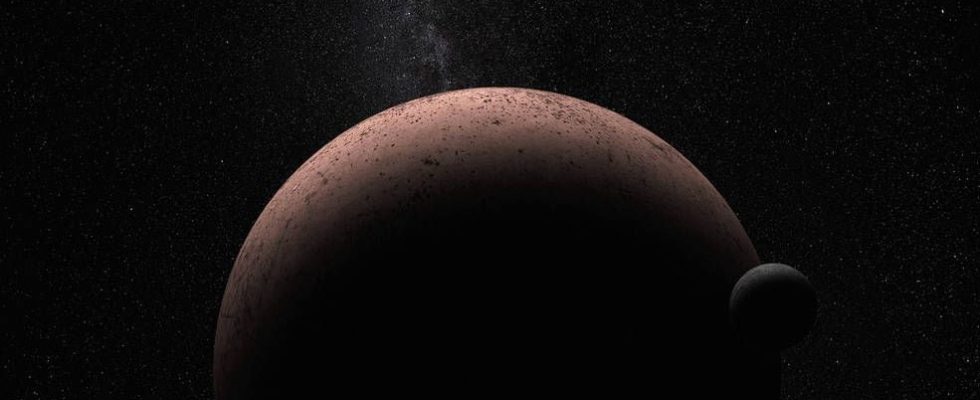It’s the most anticipated series of the year. This March 21, Netflix put online The Three-Body Problemthe adaptation by the creators of Game Of Thrones of a science fiction monument. The novel and best seller by Chinese author Liu Cixin tells of an alien invasion triggered by a famous mathematical puzzle: the three-body problem. An equation that mathematicians have been looking at for a long time, without having succeeded in finding a solution. To enlighten us, we interviewed – in three questions – Alain Chenciner, professor emeritus at Paris-Cité University, associate researcher at the Paris Observatory, specialist in the three-body problem and reader of the work of Liu Cixin.
L’Express: What is the three-body problem?
Alain Chenciner: It is a problem that is written very simply, in a half-line equation, but whose solutions are extraordinarily complex. It involves predicting the movements of several bodies [NDLR : des soleils et une planète, par exemple, dans l’œuvre de Liu Cixin] which attract each other. To do this, it is necessary to determine their position and their speed at a given moment, which will make it possible to define their trajectory in the future and in the past. The motion of spacecraft is governed, for example, by the equations of the “n” body problem [NDLR : “n” désigne un nombre entier]. If you want to send something to Mars, you need very precise estimates. For a body, we need six coordinates: three for position, three for speed. For three bodies, we therefore need 18 coordinates. For a mathematician, dealing with the three-body problem means working in an 18-dimensional space. We easily know what is happening in a two-dimensional space. The space in which we live has three: length, width, height, and it is already more complicated to understand. So, imagine at 18!
L’Express: Is this equation really insoluble?
Alain Chenciner: The equation is theoretically solvable but this solution does not generally allow us to understand “qualitatively” what the movements corresponding to it will look like. More precisely, such a description is possible, but only over sufficiently short times. A so-called “qualitative” response is exactly what Liu Cixin does. He tells us “here it is: for a certain time, this planet will revolve around this sun, and then all of a sudden, it will go towards this other sun and rotate in the other direction”. The novel illustrates this complexity well. He takes it as a theme and, as this movement is unpredictable, he can imagine many things. He then builds his scenario from there. It tells the life of the Trisolarians, inhabitants of a planet with very strange orbits and whose chaotic climate, with ice ages or very hot eras, forces them to find solutions to cope.
L’Express: Could we consider this book as a physics treatise, in your opinion?
Alain Chenciner: This is an interesting book on several counts. I found it extremely daring. It’s a political book to begin with. We can draw a parallel between what the Trisolarians are experiencing and the idea developed by some that we will one day have to leave the Earth because of global warming. We’re not there yet, but we know that if we wait a few billion years, the sun will become a giant that will swallow the Earth. And so, that life here cannot last forever. Besides, scientists don’t really know what forever means. But no, this is not a physics treatise.
The only information that can emerge at the mathematical level is that this problem is so complicated that it is extraordinarily difficult to predict what the movements of this planet will be around these three suns. Furthermore, it is a very pessimistic book. In my opinion, his message is that if another civilization manages to make contact with Earth, it will have to be destroyed before it does so with us. I believe that we are very far from encountering other forms of life, if they ever exist… which is quite improbable.
.
